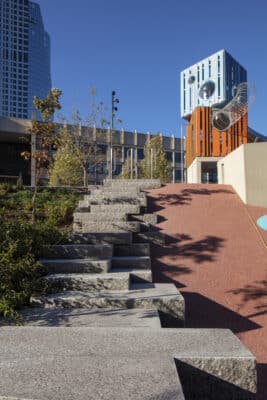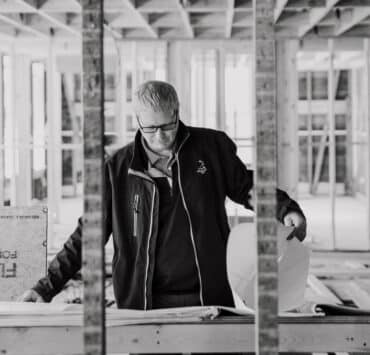|
Getting your Trinity Audio player ready...
|
When the city of Boston undertakes a capital project, its residents want to be involved in every stage of the project. “I appreciate that,” says Dion Irish, chief of operations in the City of Boston.
The city’s latest project, “The Green New Deal for Boston Public Schools,” which seeks to reimagine city schools as full-service community hubs is no exception and is, by far, Irish’s most ambitious endeavor in his twenty-seven years in local government. “We’ve already held eight public sessions and twelve focus groups. At every stage we reengage the community and provide updates to show the adjustments based on prior meetings,” says Irish.
This long-term facilities action plan combines several projects, including the development of new design standards for the city’s public schools. To reduce student transition between education levels, the city is moving from an elementary, middle, and high school model to a pre-K through sixth grade and a seventh through twelfth grade model.

Rather than attending three separate schools during their pre-K through twelfth grade education, Boston students will only need to attend two. “This study allows us to get input from an educational planning standpoint and from a design standpoint,” says Irish. The project will shave a year off all future education construction projects.
Irish’s team is conducting a study that evaluates current school buildings and analyzes the projected enrollment to see which buildings can accommodate the city’s new education model. This process includes 3-D scans of all school buildings to determine which ones need immediate remediation.
“These two studies will combine and help us develop a long-term action plan and a sequence of projects for our school system. By the end of [2023], we want to give our community an understanding of which buildings we plan to utilize and the sequence of the projects,” says Irish. Overall, Irish wants to provide Boston residents with a detailed plan, so they know if a school in their neighborhood will be renovated or rebuilt.
Satisfying the desires and needs of Boston’s nearly 700,000 residents might sound like a daunting task, but Irish says it’s not that difficult. Boston is a city of neighborhoods, he says, and keeping Boston residents in the loop about projects that affect their neighborhoods is half the battle.
“There are projects that folks may have issues with, but we’re lucky that we generally get support from residents about our projects, because we’re building libraries, community centers, and places that people want and appreciate,” says the chief operations officer.
In addition to heading up the Public Facilities Department, Irish also leads the Inspectional Services Department and the Property Management Department. He was hired by the city as a housing inspector in 1995 and soon became the constituent services liaison for the Inspectional Services Department. Eventually, he was appointed assistant commissioner for housing code enforcement. He’s also held other posts in Boston government, including executive director of the city’s office of civil rights and the city’s commissioner of elections.
“There are projects that folks may have issues with, but we’re lucky because we generally get support from residents about our projects because we’re building libraries, community centers, and places that people want and appreciate.”
Dion Irish
Irish, a self-described fixer and problem solver, uses what he calls the “align with possibility” leadership style. This style encourages bravery and experimentation that allows the leader to discover new possibilities. As an inspector, for example, Irish performed a deep dive into housing codes and found the city standards inadequate, adversarial, and reactionary. “Housing inspectors generally educated landlords of their responsibilities after they’d gotten a complaint from a tenant with a notice to correct and a threat to take them to court if they don’t,” says Irish.
He implemented a new proactive system. Rather than relying on tenant complaints to trigger remedial action, he created a system in which every property is inspected every five years. “Landlords know the things we’re going to be looking for. If they fail, it’s about giving them a checklist and an opportunity to bring their property into compliance,” says Irish.

His plan paid off. While on a routine inspection one day, Irish ran into a tenant for whom he’d previously performed an inspection. The tenant insisted he come back to the residence to see firsthand the improvements the landlord made as a result of Irish’s inspection. “That was so rewarding and emotional to me,” says Irish.
Irish’s goal is to improve the lives of Boston residents through the governmental policies that he plays a role in enacting and through the construction projects he supervises. Where once there was a “brick tundra” on City Hall Plaza, there now lies a playground and trees that welcome families, even when the plaza is covered with snow.
“Landlords know the things we’re going to be looking for. If they fail, it’s about giving them a checklist and an opportunity to bring their property into compliance.”
Dion Irish
“That’s how I view achievement,” Irish says. Those who wish to serve others, Irish advises, should explore operations. “It really gives you the ability to make a difference, to solve problems, and to make things happen in people’s lives,” he says.
Sasaki is a proud partner of the City of Boston and its Chief of Operations Dion Irish. Sasaki has collaborated with the city on a range of projects that have positively impacted the built environment, including the recently completed renovation of Boston City Hall Plaza. The project transformed the infamously vast and inaccessible plaza into a welcoming, dynamic, and fully accessible front yard for downtown Boston. The project epitomizes Sasaki’s interdisciplinary, collaborative, and community-focused approach to design.


